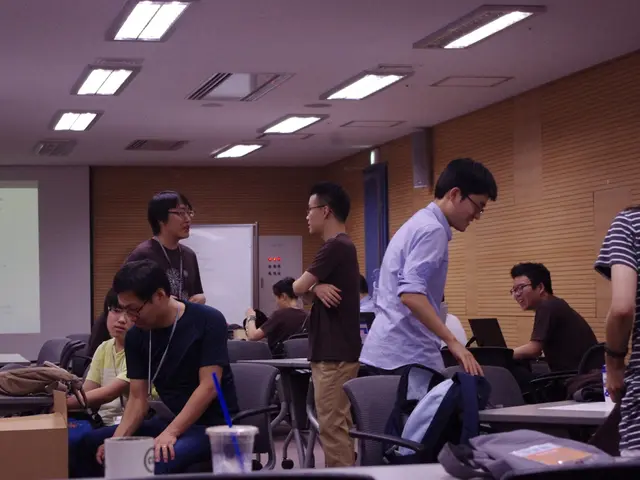Cultivating a Flexible Enterprise Through the Strength of Continuous Learning
In today's dynamic market, a strong management team acts as the engine room, fuelling the learning powerhouse within an organization. By leading by example, promoting a growth mindset, and making informed resource allocation decisions, they set the stage for continuous learning and strategic flexibility.
This culture of continuous learning is the cornerstone of building a flexible business. It thrives under dedicated leadership and investment in human capital. A learning culture normalizes failure as a stepping stone for growth and learning, creating an environment where new ideas are welcomed and debated.
To stay ahead in the industry, trend tracking is crucial. This involves staying informed about emerging trends, consumer preferences, and competitor activity. Monitoring the broader landscape also requires considering PESTEL factors (Political, Economic, Social, Technological, Environmental, and Legal) that could impact your business. Proactive threat detection allows your team to prepare to adapt before challenges become overwhelming.
Building a flexible business requires constant vigilance and active scanning of the environment for potential threats and opportunities. Cross-functional collaboration breaks down silos and encourages collaboration across departments, exposing team members to diverse perspectives and fostering a knowledge-sharing environment, accelerating learning across the organization.
Encouraging exploration of new technologies provides opportunities for employees to experiment with emerging industry-relevant technologies, keeping the team at the forefront of innovation and adaptable to new tools. An open communication culture creates a safe space for open communication, allowing for collective learning and the identification of the best solutions to challenges.
Investing in learning and development, knowledge-sharing initiatives, embracing experimentation with calculated risks, and leading by example are actionable steps to foster a learning culture. Companies like Microsoft, Google, and SAP, led by forward-thinking executives such as Satya Nadella and Bill McDermott, have successfully embedded continuous learning cultures within their organizations, creating adaptable businesses that thrive in dynamic markets.
A learning culture equips teams with the knowledge to bridge the knowledge chasm, identify hidden opportunities, and problem-solve with agility. It is the foundation of strategic flexibility, empowering human capital to drive long-term success. Cultivating adaptability in a dynamic market is essential for business success. By fostering a learning culture, organizations can adapt their approach, products, or operations to seize opportunities and navigate challenges, ensuring their continued growth and success.
Read also:
- Unfair Expenditure Distribution, Secret Tourists, Looming Rabies Threats: Latest News Roundup
- Hydrogen: Eco-friendly Alternative or Energy Imperialism Debate?
- Hydrogen: Environmentally Friendly Alternative or Energy Imperialism?
- Strategies for expanding your creative enterprise, directly from industry experts





